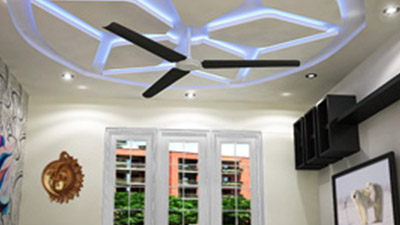
- Homeowners
- Professionals
- Products
- Back
- PlasterBoards
- Metal Framing & Accessories
- Jointing and Finishing
- Gypsum Plasters
- Ceiling Tiles
By material Type
By Category
- Resources
- About
- Careers
- FAQ's

Date: 29 April 2020
In today’s progressive world, people take pride in their lifestyle and the luxury they own. But, we are increasingly becoming aware of the impact our actions have on the environment and our future generations.
With the growing effects of the climatic changes, it is time now to adopt a sustainable way of living. But what is it? Preached by many, practised by a few; sustainable living means to live in a synchronised manner without disrupting the course of nature. It attempts to reduce the consumption and the stress on our natural and personal resources. Development in the present without harnessing the future assets, or without harming our future is of utmost importance.
But, can the sustainable living be brought into how we plan our housing? The answer is yes! Sustainable living is essentially guided by four principles-minimising waste, limiting the use of natural resources, prudent use of the environment, and ensuring quality work, which can easily be incorporated in our housing plans. Many interior designers and architects impose tremendous emphasis on sustainability while building and designing spaces. They encourage consumers to build eco-friendly surroundings. Sustainable housing helps not only to bring about a change in the way we live but also attain a better and healthy future.
So, how can one make their house sustainable? What are the things that will help people move towards sustainable housing?
Design for energy eco-efficiency
Energy conservation and a zero-waste lifestyle are the keys to sustainable housing. When designing a space, try and incorporate elements that help reduce waste and consume only the necessary amount of energy. Examples of this include energy-saving LED lights, solar panels, organic paints, and recyclable building materials such as gypsum.
Design for low environmental impact
The millennial generation wants affordable, functional spaces that offer comfort without compromising on the design or affecting the environment. Minimalism is the trend that is rapidly picking up the pace. It not only declutters a space but also helps make a small space appear bigger and spacious. Similarly, reduce, reuse and do-it-yourself (DIY) are other trends that have propagated among young homeowners. Use of multipurpose solutions such as drywalls saves not only the cost but also the materials. Drywalls are also flexible in nature, faster to construct and easier to build than conventional bricks or cement walls.
Design for durability and flexibility
Investing in a home is typically a one-time investment as there is a lot of thinking that goes in while buying a house. The goal of designing for longevity is to create durable and timeless spaces and reduce the need to change the whole design every couple of years. The best way to achieve timelessness is to choose quality over quantity, and simplicity/functionality over embellishments. Technology and innovations have led to designs that can be modified to create bigger spaces. Adjustable and modular furniture pieces such as sofa-cum beds, wall-mounted tables, and built-in shelves are all examples of such innovations.
Design for a healthy environment
People spend most of their times indoors. Be it schools, colleges, offices or homes; consideration of the indoor health should be a priority for every designer and homeowner. Use of materials that have low emission of volatile organic compounds and other air pollutants help in creating a healthy living space. The right kind of ventilation also improves the air quality of a home.
Industries such as energy, automobile, IT and biopharmaceuticals have adopted the green concept. The construction and interiors industry, too, is striding towards sustainability while designing spaces.